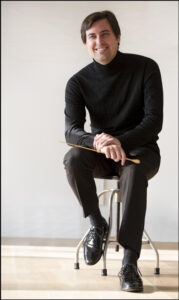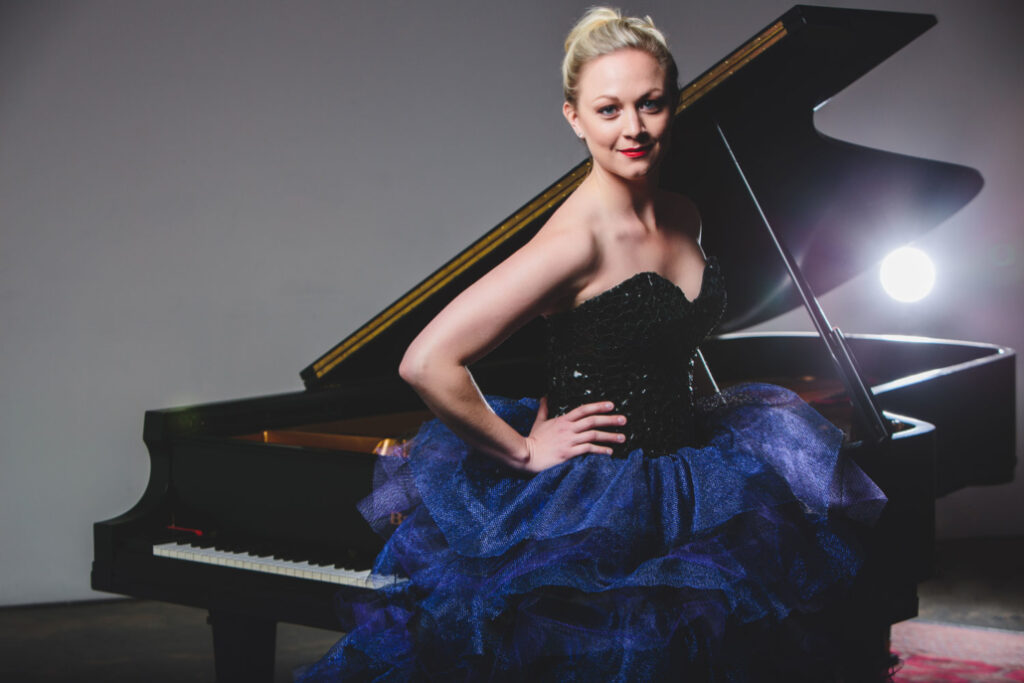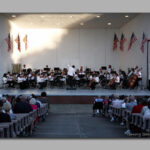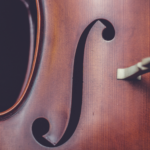BEACH, Amy: Concerto, piano, op.45, C-sharp minor
- Allegro moderato
- Scherzo (Perpetuum mobile): Vivace
- Allegro con scioltezza
Instrumentation: 2 Flutes, Piccolo, 2 Oboes, 2 Clarinets, Bass clarinet, 2 Bassoons, 4 Horns, 2 Trumpets, 3 Trombones, Tuba, Timpani, Percussion, Strings
Duration: 40 minutes
Work on the piano concerto began in 1897 and it was clearly intended not only as a major composition, but also as a way for Beach to return to the concert platform that she missed so acutely. Reminders of this surrounded her at the time: in 1895 her father died and her mother Clara moved in with Amy and her husband. The tensions between these three, particularly in terms of Beach’s musical career, cannot have been easy to bear. The first performance took place in Symphony Hall, Boston, on 7 April 1900 with the composer as soloist, and the Boston Symphony Orchestra conducted by Wilhelm Gericke. The two-piano score was published the same year by the firm of Arthur P Schmidt, with a dedication to the Venezuelan pianist Teresa Carreño (1853–1917), one of the greatest soloists of the age (Sir Henry Wood described her as ‘this great woman who looked like a queen among pianists – and played like a goddess’). Carreño wrote a gracious letter accepting the dedication with delight, and she tried to arrange a performance with the Berlin Philharmonic in 1901. However, these plans came to nothing and Carreño never played the work, so the task of advocating the concerto fell squarely on Beach herself. She once wrote that a composition could be ‘a veritable autobiography’, and the piano concerto has elements that can certainly be considered in this way. Several of the themes are quotations from earlier songs, and the idea of a piano soloist (Beach) pitted against an orchestra (the forces in her upbringing and home life that conspired to make her career so difficult) is a persuasive one. Beach herself, however, gave nothing away in her own programme note on the work:
The work is in four movements, the last two being connected.
The first, Allegro [moderato], is serious in character, piano and orchestra vying with each other in the development of the two principal themes, of which the second is songlike in character. There is a richly worked out cadenza for the solo instrument near the close of the movement.
The second movement, Scherzo, bears the subtitle ‘perpetuum mobile’, and consists of a piquant etude rhythm unbroken throughout the piano part, set against an orchestral background that sings the melody in the stringed instruments. This is a short movement, with a brief cadenza for the piano before the final resumption of the principal theme.
The slow movement is a dark, tragic lament, which, after working up to an impassioned climax, passes through a very soft transition directly into the last movement, a bright vivacious rondo.
Before the close there comes a repetition of the lament theme, with varied development, quickly followed by a renewal of the rondo and then a coda.
The four-movement structure is perhaps an echo of Brahms’s second piano concerto, and as Beach herself suggests in her note, the soloist and orchestra are in a state of tension, even opposition – ‘vying with each other’, as she puts it. This is apparent throughout the long first movement, which is much the most extended of the four. The second movement quotes from her song ‘Empress of Night’, setting a poem by her husband, with a dedication to her mother. The figurations of the piano accompaniment are transformed in the concerto into the soloist’s perpetuum mobile theme, which – in this new guise – consumes and all but buries the main melody of the song. The slow movement quotes from the song ‘Twilight’, another setting of her husband’s verse; freed of Dr. Beach’s rather stiff words, the music develops with a tragic intensity that is all the more remarkable given the conciseness of the movement. The rondo finale is marked Allegro con scioltezza, indicating fluency and agility. The soloist takes the lead throughout, introducing each idea, and growing in confidence and domination. If we accept the evidence for an unstated autobiographical programme lying behind this work, then Beach’s finale has the soloist (herself) emerging triumphant and free. It was to be a prophetic metaphor: in 1910 her husband died, and her mother’s death came early the next year. Free at last to make her own professional decisions, Beach in her early forties was able to pursue her career as a concert pianist, and she undertook several successful tours in Europe, and while she continued to compose, it was performing that gave her the greatest pleasure before she retired from concert-giving in 1940. In Musical America in 1917, she declared that ‘the joy of giving of your highest powers is beyond description… When I play there is only limitless enthusiasm and enjoyment.’
–Nigel Simeone © 2017

 Orchestra. We look forward to seeing and hearing what our Grammy Award winning Music Director and Conductor, Michael Repper, in his second year, has in store for us. Michael’s enthusiasm, talent, and ability to “think outside the box” in dynamic, innovative, and delightful ways were evident in his inaugural year. He and our outstanding musicians presented an array of both familiar and new musical offerings and we look forward to more of that this year. As always, we strive to unite, educate and enrich our community through the engaging and transformative power of orchestral music experiences. We hope you find it inspiring and refreshing. Happy listening!
Orchestra. We look forward to seeing and hearing what our Grammy Award winning Music Director and Conductor, Michael Repper, in his second year, has in store for us. Michael’s enthusiasm, talent, and ability to “think outside the box” in dynamic, innovative, and delightful ways were evident in his inaugural year. He and our outstanding musicians presented an array of both familiar and new musical offerings and we look forward to more of that this year. As always, we strive to unite, educate and enrich our community through the engaging and transformative power of orchestral music experiences. We hope you find it inspiring and refreshing. Happy listening! Dear Ashland Symphony Orchestra Patrons,
Dear Ashland Symphony Orchestra Patrons, I am excited to be celebrating my 10th season with the ASO! This “Fabulously (un)familiar” season will bring you works by the old masters: Beethoven, Brahms, Mozart, and Tchaikovsky. But you will also hear the world premiere of Stefan Swanson’s Symphony No.2 “Lipsky”, Iubilo by Brian Nabors, Starburst by Jessie Montgomery, and the artistry of the young cellist Aurelia Faidley-Solars, just to name a few of the unfamiliar musical experiences you will have.
I am excited to be celebrating my 10th season with the ASO! This “Fabulously (un)familiar” season will bring you works by the old masters: Beethoven, Brahms, Mozart, and Tchaikovsky. But you will also hear the world premiere of Stefan Swanson’s Symphony No.2 “Lipsky”, Iubilo by Brian Nabors, Starburst by Jessie Montgomery, and the artistry of the young cellist Aurelia Faidley-Solars, just to name a few of the unfamiliar musical experiences you will have. Michael Repper is one of the most sought-after young conductors in the world. With work spanning four continents, Mr. Repper has an international reputation for engaging and exciting audiences of all spectrums, and for promoting new and diverse musical talents. In 2023, he became the youngest American conductor to win a Grammy® Award in Best Orchestral Performance.
Michael Repper is one of the most sought-after young conductors in the world. With work spanning four continents, Mr. Repper has an international reputation for engaging and exciting audiences of all spectrums, and for promoting new and diverse musical talents. In 2023, he became the youngest American conductor to win a Grammy® Award in Best Orchestral Performance.






